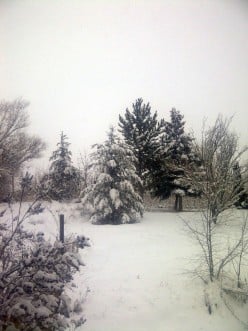 75
75- 0
Should You Trim or Prune Your Tree?
Winter is half over now. Have you looked at your trees? The best time to prune or trim them is while the sap is still in the roots – a period of time perhaps best known for when the tree is dormant.
- 0
Crown - Ancient Jewish Bridal Attire
This final piece in various forms continues to be used in Jewish weddings simply due to the fact that on their wedding day, the Jewish bride and groom are known as King and Queen in Jewish circles.
- 0
Forehead Jewels or Nose Jewels - Ancient Jewish Bridal Attire
"A Jewel on thy Forehead" This phrase in the KJV has been interpreted by many other translations as a nose jewel of the kind of jewelry typically seen even today in Middle Eastern brides.
- 4
Ornaments - Ancient Jewish Bridal Attire
The word for "ornaments" in the KJV, comes from a Hebrew word that in general refers to "trappings, finery, etc", but in this tense, actually refers to something called a headstall!
- 0
Badger Skin - Ancient Jewish Bridal Attire
The Hebrew word for Badger's skin in the KJV, has been debated by some scholars as to whether it truly means the badger, which did and still does live in the region. . .
- 0
Ancient Jewish Bridal Attire - an Introduction
Understanding the bridal adornment in Ezekiel requires an understanding of everyday attire given in Isaiah.
- 5
Agate or Emerald - The Eighth Stone in Aaron's Breastplate
This eighth stone in Aaron's Breastplate is largely considered to be the Agate, although some say the Emerald as well. Most sources agree that the color of the stone is a deep green colour.
- 0
Ligure: The Seventh Stone in Aaron's Breastplate
Learn about the colour and meaning of ligure (which may be sapphire or lapis lazuli), the seventh stone in Aaron's breastplate.
- 0
Anthrax(Garnet) or Jacynth - the Fourth Stone in Aaron's Breastplate
Depending on the sources you read in what time period they wrote, you will find yourself looking at the fourth stone of the first row of Aaron's Breastplate and wondering what they are talking about
- 0
Sardis - The First Stone in Aaron's Breastplate
The first Stone in Aaron's Breastplate, and generally considered by some to be the sixth stone of New Jerusalem's 12 Foundations, is Sardius, also known as Carrnelian, a varient of Chalcedony.
- 3
Aaron's Breastplate, The New Jerusalem and the Bride of Christ
"How does God Adorn His Bride in the Scriptures?" At first glance, this question seems entirely scandalous! God does not have a wife! Or does He?














